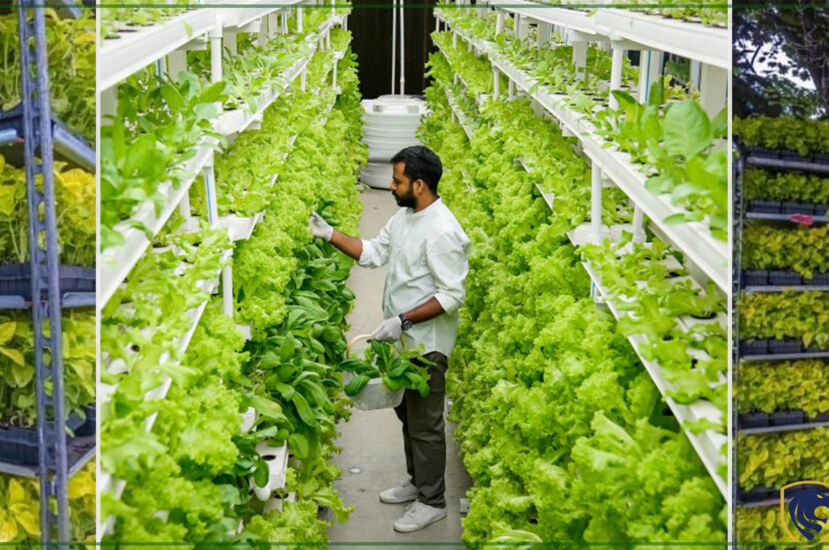There are many ways that people can make use of technology in order to make their lives easier and more efficient. Sometimes, this technology is used for personal use like the electric car or the industrial machine. Other times, the technology is used for work purposes. And it helps save a lot of time and energy by changing jobs and processes in the industry. Sometimes, new technology will change the way people do things for personal and professional reasons. That could lead to additional job opportunities or increased wealth in an area.
One particular trend that has been increasing over the past few years is referred to as vertical farming, which involves using indoor agriculture technologies within a building rather than outdoor agriculture technologies such as fields and farms. This trend is changing how people do things, how they view farming, what it means to work in the agriculture industry, and how food is made available to people.
What exactly is vertical farming?
Vertical farming technology is a farm system where you will raise crops or livestock indoors within a controlled environment designed for agricultural processes. These farms are typically vertically built so that they take up less space than traditional farms. And are usually indoors because of several benefits that indoor plants enjoy. Such as water use efficiency and better environmental controls.

Vertical farming technology
There are tons of different vertical farm systems available online today. You can buy small indoor gardens from many different businesses online if you are looking for a simple way to start your own vertical farm at home. If you need many plants for your vertical farm, you can also make your own custom vertical farming system from individual components that have been designed to work together. Another possible way to get started on your own vertical farm is to build a greenhouse from scratch. This is the easiest method of creating an indoor environment for growing crops because it only requires some wooden materials and a few PVC pipes, which most people already use for backyard gardening.
Vertical farming businesses
Vertical farming technology has been around for a while. But it is still relatively new in terms of the number of businesses that have built their business around this technology. The Indoor Agriculture Alliance is an organization. It works with local and national organizations in order to provide education and training on indoor agriculture technologies. Another organization that promotes the benefits of vertical farming technology is called the Vertical Farming Association, or VFA. This non-profit organization promotes vertical farming through newsletters, meetings, and other efforts to increase knowledge about this new process.
Vertical farming technology can benefit both the food industry and our environment by offering a method for growers to use less land for growing crops and animals. That is also beneficial for decreasing our dependence on oil and other resources being used for transportation.
AeroFarms
One company in the vertical farming industry is called AeroFarms, which opened its first vertical farm in Newark, New Jersey, in 2008. They provide test-kitchen-style tours to visitors interested in seeing how vertical farming works through an industrial-scale operation. The AeroFarms website states that they offer “the freshest produce, locally and sustainably grown using innovative aeroponic farming techniques.” This company has raised $40 million from investors and is planning to expand its Newark facility from 1 million square feet to 5 million within the next three years.

AeroFarms
Another company working with vertical farm technology is Local Garden Chicago which provides learning opportunities for people who want to start a new career in vertical farming. This company also uses locally grown produce, herbs, and vegetables. They also make use of hydroponic techniques for growing their agricultural products. VF America is another vertical farming business that focuses on everything from giving tours to helping those who would like to learn more about the benefits of indoor farming technology.
Benefits of vertical farming
The benefits of vertical farming are endless. But the most obvious benefit is that it uses much less land than any traditional farm or field. So, there is less competition for land and water usage. At the same time, people in urban areas can raise crops. And have fresh food year-round, allowing them to eat a healthy diet without having to go out of their way to get a good meal.
Vertical farming technology also produces crops and plants at rates much faster than traditional farming. So there is increased economic output from businesses that use this technology. In addition, vertical farming uses 90% less water than outdoor farms. That saves a ton of money monthly for companies that use vertical farm technology.
A vertical farm is a sustainable farming technique for producing food in controlled, indoor environments. It’s also known as a high-rise or rooftop farm. It can involve hydroponics, aeroponics, and/or aquaponics to grow crops without the use of soil and sunlight. This method can also include “lid” systems, where crops are grown in a greenhouse-like structure on top of buildings that do not support the crops.
In terms of cost, vertical farming is significantly more expensive than traditional open-field farming. It can be considerably more profitable if it is done right, but it still costs more to set up and run than traditional farming.
What is the best vertical farming system?
The answer depends on your goals and what you’re trying to accomplish. Some systems are better for growing food in large quantities. While others work best for growing specialty crops or specific types of food.

Vertical farming
Some advantages of vertical farming are:
- Cost. Vertical farming technology requires less land and water than traditional open-field farming, and it’s often more profitable.
- Growing larger amounts of food in small areas. Vertical farms can grow a very large amount of food in a very small amount of space, which is especially useful for specialty crops that do not do well in monoculture.
- Producing just one type of food at a time, without having to rotate crops or plant the same ones each year. This allows you to get higher yields per square foot using the same land area while reducing the risks associated with crop. Andloss due to weather and other factors over the course of several years. (Depending on your location).
- Using less energy and water than traditional farming systems.
- Having more control over the environment than traditional farming methods, allowing you to use sunlight, wind. And other conditions as a tool to produce food in a controlled environment.
- Producing organic food without the risk of contamination from soil or chemicals like pesticides, herbicides, fungicides, etc.
- Growing food without the need to purchase land or pay rent on land you do not own. This can be useful for people who wish to grow crops. But don’t have access to that land or do not have enough money for it. (Especially if you’re also saving money by doing this).
drawbacks
There are some drawbacks to vertical farming, though. However, vertical farming is a better option to be more efficient and environmentally friendly with growing crops.
This technology will continue to advance over the next few years. With many new ideas and techniques emerging every month. And leading to even more opportunities for people who want to raise plants or livestock in an indoor environment. People are using vertical farming technology for a number of different reasons, including using it as a hobby in their home or using it as a small business opportunity. Vertical farming will continue to evolve, and people will find many different ways to benefit from it.




